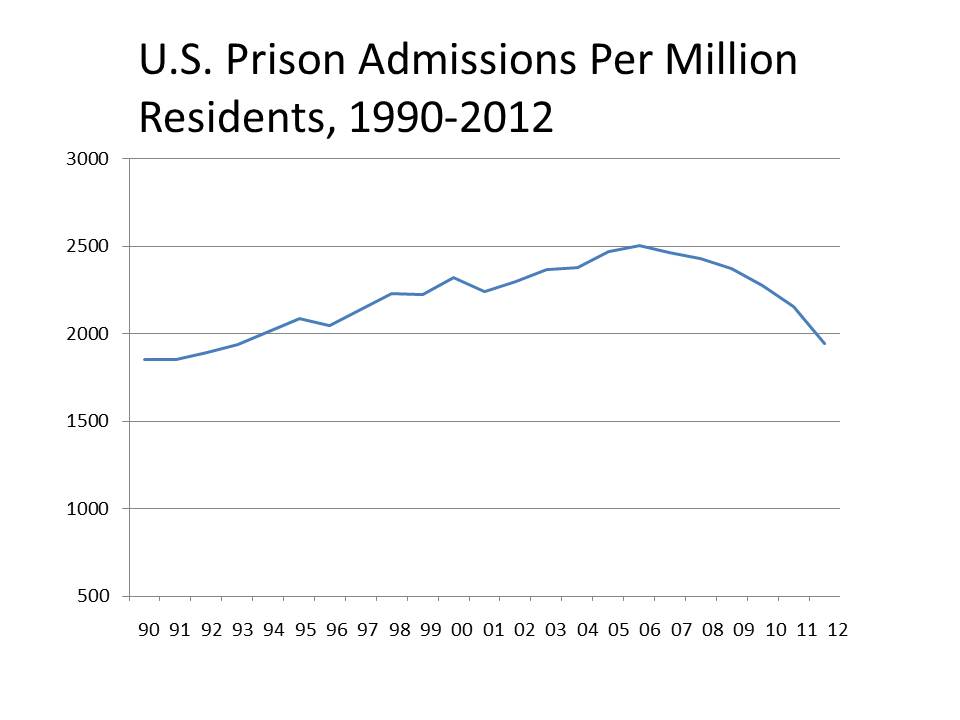Dana Goldstein at the Marshall Project has created a useful interactive graph showing who is in prison and how we might build further on the de-incarceration trend which started five years ago. Goldstein also echoes a point that Mark Kleiman and I have made here many times: It’s a myth that prisons are full of non-violent drug offenders.
The chart below presents Bureau of Justice Statistics data on state prisons, which is where almost 90% of U.S. prisoners reside. Violent crime has consistently been the leading cause of imprisonment, and most state prison inmates are serving time for a violent offense. Importantly, the data reflect current controlling offense only and thus understate the proportion of prisoners who engage in violence: Many inmates currently serving time for a non-violent offense have prior convictions for violent crimes.
These data make de-incarceration more complex in at least two ways , which is perhaps why so many people don’t want to believe them.
First, the noble ongoing efforts to reduce the size of the prison population should take substantial care to protect public safety as violent offenders are released. Mass dumping of violent offenders into communities with no monitoring and no services would be dangerous for them, for their families, and for their neighbors. Further, if it leads to released prisoners committing high-profile acts of violence, it could also choke off political support for continued de-incarceration.
Second, even assuming the best of all policy worlds in which reducing incarceration continues to be a priority, the U.S. is probably too violent of a society to ever shrink its prison population to a Western European level. The proportion of the U.S. population that is serving time for violent crimes is larger than the proportion of the Western European population that is serving time for all offenses combined.
![Corrections in the United States_0442512_2[1]](../../wp-content/uploads/2013/07/Corrections-in-the-United-States_0442512_21.jpg)

![Corrections in the United States_0442512_2[1]](../../wp-content/uploads/2013/08/Corrections-in-the-United-States_0442512_21.jpg)